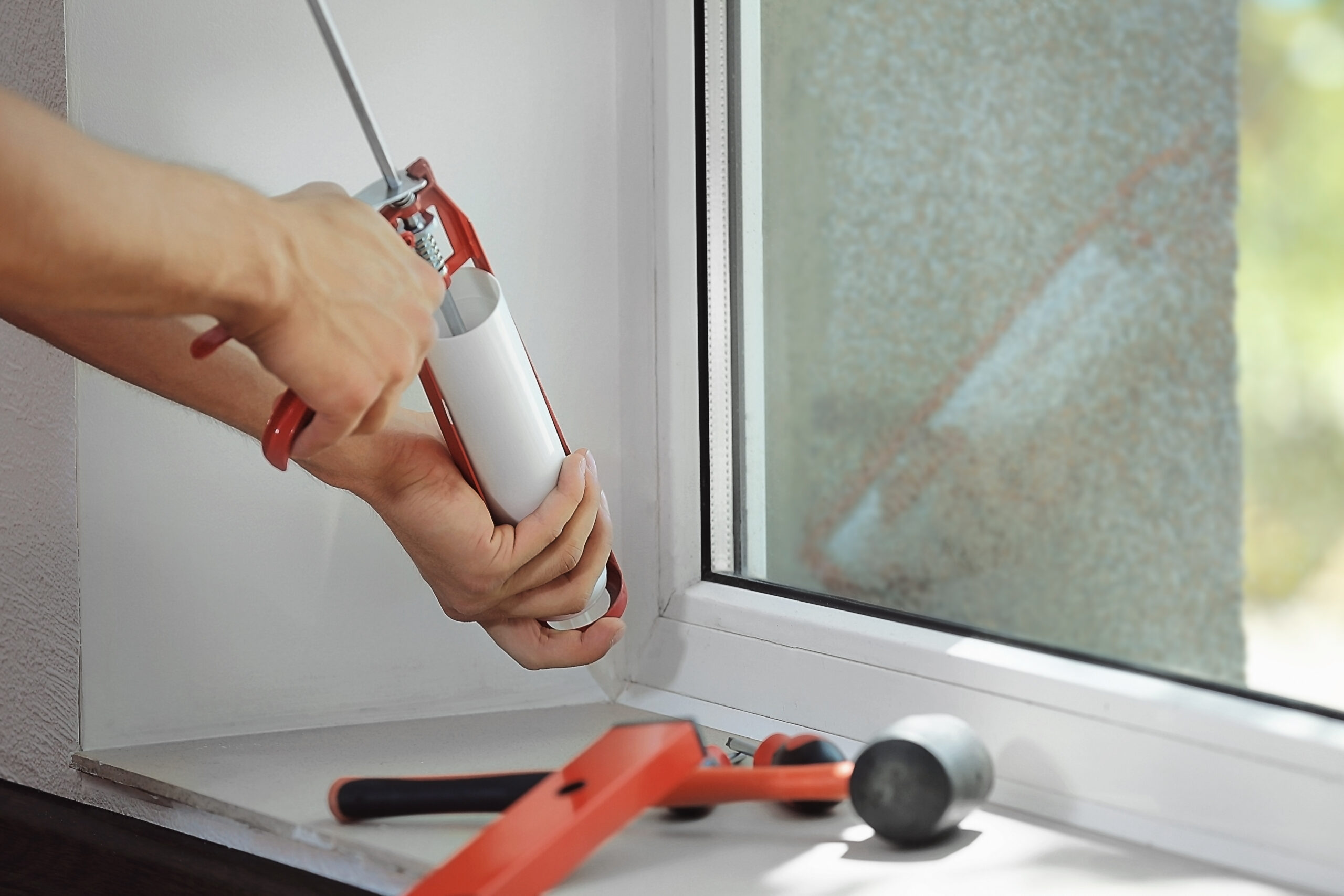
Construction worker installing window in house
Having tight control over the boundary of your home, what is indoors and what is outdoors, is vital. This even applies to the very air you breathe. Your aims to create a comfortable home can be severely undermined by drafts, which can make your home colder in the winter and hotter in the summer, not to mention compromising your indoor air quality. As such, here are a few vital tips on what you can do to find, fix, and prevent drafts from taking over your home.
The benefits of draft-proofing your home
First of all, you might be wondering why it’s so vital to draught-proof the home in the first place. However, there are a variety of benefits you’re going to enjoy. You don’t have to deal with the discomfort of drafts, you can money on your heating due to less hot air getting out of the home, and you can even improve your air quality.
Insulation is key
Insulation is going to play a big role in making sure that there are no draughts in the home. Some wall materials can start to let the outside in if they’re not given a little extra reinforcement. Not only will insulation help keep the home’s temperature more manageable in general, but it can also offer some protection from drafts, too, so you should look to teams like Koala Insulation that can offer that protection where you need it. Not only does this include your loft and basement, but you can even insulate under your floorboards, as well, which can be good if your home has a crawlspace beneath.
Look to the roof
Moving from the lowest point of the home (the crawlspace) to the highest point, you should keep your roof’s health in mind at least once a year. Cracked, broken, or loose tiles can expose the less sturdy material beneath. This can lead to not only leaks and problems with mold, but it can also allow drafts to get into the home. Make sure that you repair your roof as soon as you notice any issues with it. In most cases, you’re not going to need to replace the whole thing, just the affected tiles.
See if your windows need to be replaced
One of the most common sources of draughts in the home are the windows all around it. While windows are designed to be flush to the walls around them, the seams can start to open up and become more vulnerable over time. At some point, this will let in drafts and sabotage the window’s ability to help maintain your indoor climate, and at that point, you should work with teams like Renewal by Andersen window replacement. However, the worst-case scenario is not going to be the situation for most people, so there are other steps to keep in mind, too.
If you’re not going to replace a sash window
If you have an older home that has those classic sash windows, then you might not want to replace it any time soon. After all, they can very much be the key part of a historic home’s charm. However, if they’re starting to get drafty, then you should be doing what you can to repair them. Window foam seal (which can either be sprayed directly into the gaps surrounding the windows or bought as a roll that covers over those gaps) can be very effective, while others will make use of secondary-glazing film which can be applied directly over it.
Check the door too
The door can suffer from many of the same potential problems that affect the windows, as well. As time goes on, doors are simply going to become less reliable and drafts are going to start opening areas around the gaps. To that end, you should consider when you’re going to need to replace your door, too. It’s worth noting that wooden doors are more prone to this, due to the way that wood expands and contracts when in contact with moisture, so PVC is becoming a much more popular choice. It also helps the home look more modern.
Caulk and weatherstripping might work, too
If you’re not planning to replace either your windows or your doors at the moment, what else can you do to stop drafts from coming in? As mentioned, foam sealant can be effective but, for smaller breaches, a little caulk can do a lot of good, as well. You can also use weatherstripping in the seams around these fixtures. Draught excluders can be placed at the foot of the door to block the air from coming in, too. Even if you’re going to need a replacement eventually, some of these can act as a very worthwhile solution until you’re able to do ahead with the problem.
Your pipework and utilities are important too
It’s not just the windows and doors that open up seams in the home’s boundary that might allow the cold air to get in. Most homes are hooked up to utilities that connect to the outside world. This includes the plumbing and pipes. The tips are much the same as mentioned above: finding the right material to seal any gaps that might have formed. For smaller gaps, you can use silicone filler. Larger gaps might have to be filled with polyurethane foam, which you spray into the gap and watch as it expands to fill it up. Finding the source of the draughts can be the tough part, so start by feeling around the doors and windows (or by using a piece of paper to see if it’s sucked into any of the gaps or seams around them). If you don’t find it around these common culprits, then you should start looking at the utilities, pipework, and so on.
Keep an eye out for cracks
If you see any cracks in the wall or any parts where it is bubbling or rising, this should be a cause for concern as well. This typically happens due to moisture or other elements wearing the wall away, and can open up a path for cold air to make its way in. As soon as you see it, you should fill the crack yourself with plaster, if it’s small enough, or work with a team like The Patch Boys.
Mind the humidity of the home, as well
If you have been dealing with any drafts in the home, then you should be aware that it’s not just the cold that they can bring in: they can bring in moisture and humidity as well. Aside from making your air quality worse, this humidity can lead to mold growths throughout the home that can be tough to get rid of entirely if they take root unnoticed. Consider investing in a dehumidifier if you find a spot where a draught is getting in.
What not to block
There are some things you should make sure that you don’t try to cover when it comes to sealing up gaps in the home, however. Anything that has to do with maintaining good airflows, such as ventilation shafts and bathroom extractor fans should not be touched. This also goes for any wall vents, trickle wents, under-floor grilles, or airbricks that your home might have.
If you want a safe, comfortable, and healthy home, then maintaining its boundaries is vital. Hopefully, the tips above make it easier to do that and to prevent drafts from ruling the roost. As soon as you feel one, you should get on it ASAP.


